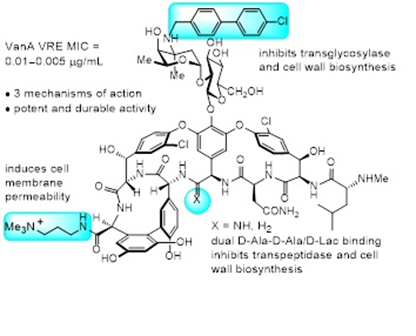Understanding Cardiac Calcium Signaling from Molecules to Systems
Abstract.
Abstract.
ABSTRACT
A summary of studies on the total synthesis and evaluation of the vancomycin family of glycopeptide antibiotics, their ligand binding pocket redesign to address the underlying molecular basis of resistance, and their subsequent peripheral tailoring to address the emerging public health problem of vancomycin resistance will be presented.

Abstract:
ABSTRACT
Abstract:
Abstract
Photoredox and Electrochemical Methods for C-N Bond Forming Reactions
ABSTRACT
In the "bottom-up" approach, materials and devices are constructed from molecules capable of assembling themselves by principles/methods of molecular recognition. Although well-defined assemblies can be engineered by exploiting various noncovalent interactions, there are limited methods in the literature regarding the design and analysis of self-guiding molecules for materials application in which there is a strategic integration of the self-assembling motif. The principal research conducted in the Watkins Group encompasses fundamental studies towards understanding the molecular assembly of complex systems as it relates to overall performance. Reported are design guidelines towards novel building blocks for functional materials—specifically those for applications in optoelectronic devices and biomaterials. The multi-step synthesis of these building blocks is discussed. Spectroscopic analysis, as well as characterization via transmission electron microscopy (TEM) and X-ray crystallography of the molecular components and their resulting supramolecular assemblies, reveal materials possessing properties that are comparable to—even surpass—those commonly reported in the literature. Results of this study will be employed towards further research in novel molecular components capable of yielding high performing materials.
Learning Objectives
White phosphorus (P4) has been the traditional entry point into phosphorus chemistry. The thirteenth element to have been isolated, it can be oxidized with elemental oxygen or chlorine, or reduced in a variety of ways. We investigated its reduction using early transition metal systems and breakdown to produce complexes with terminal metal-phosphorus triple bonds. Such terminal phosphide complexes possess nucleophilic phosphorus atoms, paving the way to new phosphorus-element bonded systems.